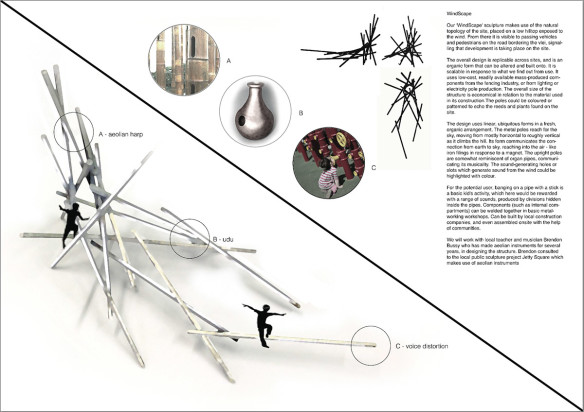I’ve been working with the Princess Vlei Forum as part of my postdoc and wider work. The PVF is running a campaign to save a lake and wetland in the Cape Flats from a shopping mall development – they want to keep it public land, and develop it as a ‘people’s park’. As one of the strings to their bow in their campaign to save the Princess, the PVF entered their plans for alternative development on the site to World Design Capital 2014 for recognition – you can download their WDC2014 submission, which has been shortlisted.
As a contribution to imagining what shape some of the elements of the park could take, I worked with design company ThingKing on an entry to the competition PlayScapes in August 2013, commissioned by the Princess Vlei Forum. We developed the idea of four interrelated installations on the site, playing on the idea of the archetypal ‘4 elements’ (air, water, earth, fire). For fire we designed a communal story-telling fire site; for earth a playground incorporating planting; for air a wind-activated sound sculpture and climbing frame; and for water we suggested options from a floating bird habitat island to baptism facilities (church groups use the lake for ceremonies).
You can download a low res version of our competition entry (11 MB).
And you could like our entry on the PlayScapes Facebook page.
